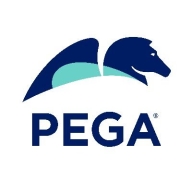

Pega Platform and AWS Step Functions operate in the business process management and workflow automation domains. Pega is superior due to its robust features and flexibility in deployment, yet AWS Step Functions integrates seamlessly within AWS's ecosystem.
Features: Pega Platform enables easy process implementation and rapid changes, fast prototyping, and cloud deployments with its case management and integration services. Its situational layer cake and out-of-the-box functionalities enhance business processes. AWS Step Functions delivers advanced workflows improving efficiency and integration within AWS. It supports workflow automation with a graphical interface and JSON.
Room for Improvement: Pega Platform users encounter challenges with upgrade processes, cloud capabilities, emerging tech support, learning curve, and costs. AWS Step Functions users critique its licensing model, cross-environment integration, and data transformation features, seeking more versatility beyond AWS.
Ease of Deployment and Customer Service: Pega Platform supports on-premises, cloud, and hybrid environments, although its customer service is mixed. AWS Step Functions is primarily for public cloud and receives positive feedback for knowledgeable support, though unique customer scenario handling needs improvement.
Pricing and ROI: Pega Platform's pricing is considered expensive for SMEs but worthwhile for large organizations due to strong ROI. AWS Step Functions' usage-based pricing is cost-effective for low usage but rises with consumption, offering efficient business process enhancements though its pricing complexity could be improved.
The speed of reply and the content of their responses usually solve the problems that arise.
I use enterprise support, which is excellent, providing responses within fifteen minutes.
The technical support from Pega is very low, rating a one or two out of ten.
I never needed support from the platform standpoint, but if additional features are required, we have regular meetings with the product team for feedback.
Pega's technical support team is very helpful.
They can handle multiple simultaneous requests effectively.
There isn't much need for scalability when creating orchestration in AWS Step Functions, which explains the rating of six.
Currently, big banking providers and insurance providers, even the members for healthcare payers, are using more than millions of operations on a daily or weekly basis.
If one zone fails, others handle the demand, ensuring high availability.
I never faced any faults or issues due to its stability with AWS, making it very reliable with no downtime and 100% reliability.
It would benefit from more integration with different applications or services.
With the recent development of AI agents in Pega Platform 24.2, the adoption is not heavy due to regulations around using external LLM by customers, especially regulated customers in BFSS and healthcare.
Pega introduced Constellation, which allows a user to build a more engaging visual experience.
My learning curve in robotics has been challenging.
Pricing for Step Functions is very cheap.
The cost is average, provided it is configured correctly.
Pega is priced higher than open-source options like Flowable but is suitable for large-scale industries like banking and insurance.
The pricing is expensive, and this is an issue.
From a licensing perspective, it is higher than the competition.
Step Functions provide seamless integration with AWS services, which enhances the speed of application development.
It was particularly valuable for its integration capabilities, allowing for execution of scripts and data migration.
AWS Step Functions offers advanced workflows that save time and enhance efficiency by reducing delays and ensuring consistent orchestration among various services.
Management capabilities such as dashboards.
Pega Platform is excellent for enterprise-level solutions with integrations to entire systems, including case management, service orchestration, CRM, decision-making capabilities, digital process automation, and AI-driven functionalities.
| Product | Market Share (%) |
|---|---|
| Pega Platform | 5.2% |
| AWS Step Functions | 2.1% |
| Other | 92.7% |


| Company Size | Count |
|---|---|
| Small Business | 7 |
| Midsize Enterprise | 2 |
| Large Enterprise | 5 |
| Company Size | Count |
|---|---|
| Small Business | 9 |
| Midsize Enterprise | 15 |
| Large Enterprise | 68 |
AWS Step Functions integrate seamlessly with other AWS services to offer efficient pipeline and workflow management. Its intuitive design allows for streamlined orchestration, easily handling complex tasks.
AWS Step Functions provide robust orchestration and automation capabilities, simplifying the creation of workflows with graphical and JSON-based designs. It excels in managing tasks through advanced parallelization and error handling features. Automatic scaling further enhances performance, ensuring reliability in varied environments. However, improvements are needed in IDE integration, larger data handling, and fault tolerance. Users find value in its capacity for microservice orchestration and data integration, although dependency on the Amazon ecosystem and limited third-party integrations pose challenges.
What are the key features of AWS Step Functions?In industries managing data pipelines, AWS Step Functions orchestrate workflows, execute parallel ETL jobs, and integrate various AWS services, enabling smoother operations and efficient data migration. Companies benefit from streamlined processes and robust handling of interdependent tasks.
Pega Platform provides flexible business process management with a focus on rapid application development and automation through a low-code approach, enhancing efficiency across sectors.
Pega Platform is renowned for its ability to streamline operations with robust automation features, including robotic process automation and decision-making capabilities. Its intuitive interface and workflow management contribute to a reputation for enhancing business processes. Although users face challenges with integration limitations and high licensing costs, they benefit from rapid deployment and efficient process adaptations. The unified architecture reduces complexity, while case management and integration services support digital transformations in sectors such as banking, insurance, and healthcare.
What are the key features of Pega Platform?In industries like insurance, banking, healthcare, and government, Pega Platform is implemented to automate diverse workflows, supporting initiatives from claims processing to customer onboarding. Enterprises use Pega for case management and digital transformations, valuing its out-of-the-box integrations and real-time reporting capabilities to boost operational automation and enhance customer experiences.
We monitor all Business Process Management (BPM) reviews to prevent fraudulent reviews and keep review quality high. We do not post reviews by company employees or direct competitors. We validate each review for authenticity via cross-reference with LinkedIn, and personal follow-up with the reviewer when necessary.